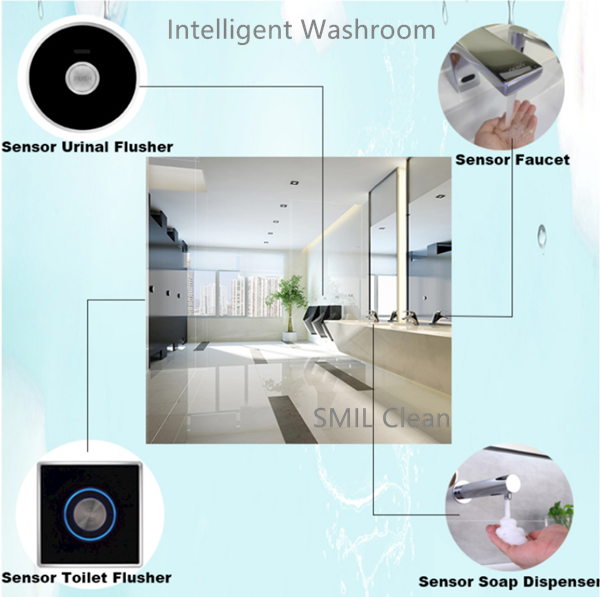NEWS
Hygiene dispenser trends
Do today’s customers demand style, hygiene and sustainability from their washroom dispensers, or do they merely want a functional system that works? ECJ looks at current trends in the washroom dispenser market.
When washroom dispensers were first developed, early models tended to be functional white boxes with sharp corners and even sharper teeth for pulling out lengths of paper. But over the years various factors such as sustainability, fashion, technology, hygiene awareness and cost have all helped to shape market trends. So which of these factors resonates most with today’s customers?
The answer is all of them, says European communication manager of Tork manufacturer SCA Alexandra Grubb. “Customers want a dispensing system that is hygienic and convenient to use, but the total cost – including cost-in-use and maintenance – should also be right,” she said.
Touch-free systems that are easy to clean are particularly popular with today’s hygiene-aware customers, she says. “Some companies offer dispensers with antibacterial coatings but it is a big challenge to develop an efficient solution that has no negative impact on the environment once it is taken of the wall.”
She says systems like the C-fold towel dispenser, which can give out more towels than the user needs, are going out of fashion. “Most newer systems have tried to address this and we have come up with roll towel systems and new folding technologies to secure one-towel-at-a time dispensing,” she said. “We are also seeing a trend towards higher-capacity dispensers to reduce the frequency of refilling to help control costs.”
According to Grubb there is a growing trend for dispensers equipped with a video screen for showing commercials, or smart devices for tracking and communicating consumption data.
“There is also a general trend towards sustainable solutions, though the economic situation is competing with the environmental aspects of sustainability,” she adds. “The recycling of used dispensers is becoming increasingly important as more of them are equipped with batteries. I think the next big thing will be batteries with a longer life and touch-free systems that require less energy.”
She feels that convenience and ease of use are a potential future trend. “This has been a focus for Tork for quite some time,” she said. “For the user a washroom dispenser needs to be intuitive, easy to understand and capable of delivering an open towel ready to use in a hygienic way. And for the cleaner it should be easy to open, refill and clean while offering sufficient capacity to reduce the frequency of refills.”
Design matters
The company’s Tork Elevation washroom dispenser line is designed to address all these trends, according to Grubb. And she claims that design is also an important trend today, whether customers recognise it or not.
“Customer surveys indicate that design features, matching dispensers and quality finishes do not figure high on the customer’s wish list, but our experience does not support this,” she said.
“We have observed that an attractive dispenser design can be a deciding factor. But while eye-catching colours are good at attracting attention in adverts and trade shows, this is seldom reflected in sales when customers tend to choose more traditional white, black and grey.”
Metsä Tissue UK and Ireland sales director Mark Dewick feels that dispenser design and finish are only deal-clinchers for the very top tier. “A Michelin-starred restaurant or an elegant hotel will spend a lot of money to ensure its facility is unique and state-of-the-art – and they will want their washrooms to reflect this,” he said.
Manufacturers are increasingly looking for hygienic systems where the visitor only touches the product they use, says Dewick. However he adds that such technology needs to fit the environment. “It is no good if a delay between dispensed sheets causes unacceptable queues in a high-volume washroom,” he explained. “Likewise if the size of the sheet is restricted by the technology, this can result in more than one sheet being required and increased product usage.”
He agrees that end user convenience and ease of use are important issues. “If users have difficulty trying to pull out a sheet they will take three, four or five in frustration.
“Electronic systems also need to be easy to open, fill or load. Cleaning staff have minimal time to carry out cleaning and FM providers may be nervous of technologies that make this function more complicated.”
He says sustainability has become increasingly important and customers are looking towards environmental labelling and WWF advice to see which manufacturers best meet sustainability goals. Other demands include systems that avoid the product running out between maintenance checks – though cost in use is still key according to Dewick. “However all these needs vary from washroom to washroom even within any single organisation, so the real key is flexibility.”
Customers are increasingly looking to customise their washroom dispensers says washroom category manager for Kimberly-Clark Jonathan Green.
“They want to do this either through different colours or having their logos or messages displayed on the dispenser,” he said. “For this reason we have launched the new Aquarius range of hand wash and paper towel dispensers which can be customised using coloured window inserts.”
He says consumption and cost control continue to be major trends. “Hygiene is also a major consideration and we have found that an increasing number of customers are seeking sustainable dispenser solutions.”


